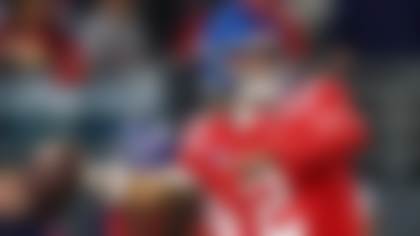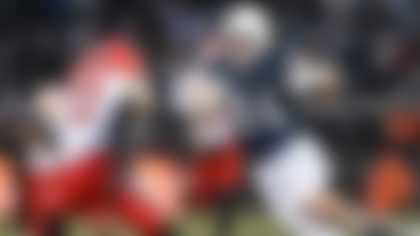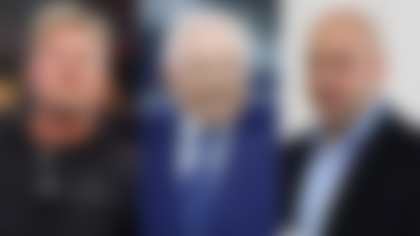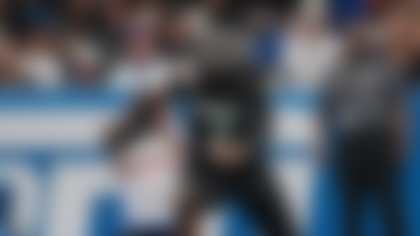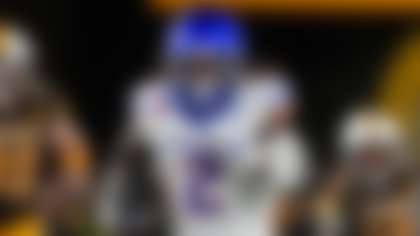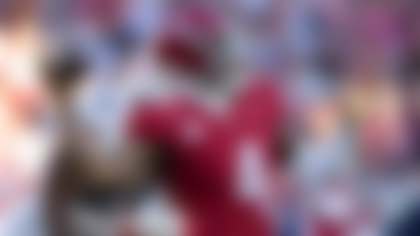LOS ANGELES -- Tucked away behind the third-base dugout of USC's Dedeaux Field lies a modest green rectangular structure that looks ordinary from the outside. Fans of all ages come to watch the USC baseball team without a second glance in its direction. But inside those walls is the Rod Dedeaux Research and Baseball Institute, a state-of-the-art facility (eight cameras rolling at 1,000 frames-per-second, three-dimensional analysis) that has attracted some of the NFL's most notable quarterbacks.
It is run by Tom House, a former pitching coach in the major leagues and at USC. That's right: Drew Brees, Tom Brady, Carson Palmer, Matt Cassel, Alex Smith and Tim Tebow have all paid a visit to USC this offseason to work with a pitching coach.
House's contributions are widely recognized in baseball circles. The 65-year-old spent eight years pitching in the big leagues, compiling a 3.79 ERA. But he left his greatest mark as a pitching coach, tutoring Hall of Famers Randy Johnson and Nolan Ryan, among others. Ryan praised House's work with the Texas Rangers in the mid-1980s.
"Tom is a coach that is always on the cutting edge," Ryan said during his Hall of Fame speech in 1999. "And I really enjoyed our association together, and he would always come up with new training techniques that we would try and see how they would work into my routine."
That sentence could be repeated by any of the quarterbacks who roll through House's office these days.
"I'm a rotational-athlete evaluator," House said. "Pitching, quarterbacking, tennis, golf, hitting ... all rotational athletes have the same timing, the same kinematic sequencing -- hips, shoulders, arms and implement. And depending on the verbiage, the same mechanics as each other. It's all the same, in order of importance: timing, sequencing and mechanics."
For more than 20 years, House and his staff collected data on the throwing motion of elite quarterbacks such as Dan Marino and Joe Montana without knowing how to use it. Then in 2004, San Diego Chargers offensive coordinator Cam Cameron recommended that Brees see his friend House to help with some struggles. Today, House and Brees are neighbors in Del Mar, Calif., and Brees works out with House just about every offseason. Brees' workout opened a new line of opportunity for House, who also has a Ph.D. in psychology. He proceeded to draft a five-day program for quarterbacks that combines physical and biomechanical coaching with nutritional and mental/emotional instruction.
House drew up the program based on quarterbacks' demand for him, not vice versa. He says all of his NFL business is generated by word of mouth: Brees tells Smith; Cameron joins the Baltimore Ravens and tells his new quarterback Joe Flacco (who missed his annual visit this year as fatherhood came calling); Palmer and Cassel hear about it when they return to their alma mater; Cassel tells his former teammate Brady; and it goes on.
"All this recent activity with quarterbacks is because of Drew," House said. "They all come for different reasons, but they all get the best information we have to make them better physically, mechanically, nutritionally and emotionally."
House's decades of experience with pitchers, combined with his rare high-tech equipment, help him detect and correct even the tiniest inaccuracies. He captures all the data by sticking tiny sensors all over the quarterback's body. When the quarterback throws, a computer is able to render a three-dimensional stick-figure representation detailing every phase of his motion, and the 1,000-frame-per-second cameras help both player and coach see what happens in a nanosecond.
"That's what probably gets their attention the most," House said. "It's not what my eyes are seeing. It's what the cameras are seeing. ... It's not what we think we see. It's what is actually being done."
This helped House point out to Smith that he was using his head as a lever trying to generate arm speed, thus creating shoulder ailments. It also helped him caution Brady (who had sought out his help) to keep his non-throwing elbow up during his delivery.
The only person who didn't go through the three-dimensional testing was Tebow because House didn't want to put that workload on his arm so close to training camp. But that didn't stop House from giving Tebow a week-long assessment that featured three tips: keep your eyes level, drag your back foot, and hold your non-throwing hand out in front of you as if you're eating a sandwich. In the five days they worked together, House said he saw a noticeable improvement.
"I think he's fairly pleased with what's happened this week," House said last week. "I'm going to guess that given the opportunity, he's going to be more accurate this year than he's ever been. That's just based on a non-quarterback guy looking at movement efficiencies.
"He's physically as healthy and as strong as a human can be. But biomechanically he had some sequencing issues."
Smith has likened House's expertise to that of a pitching coach in football. In baseball, coaches work specifically with pitchers and their delivery. In football, very few coaches focus solely on the biomechanics of the throw.
"These guys are already pretty good and they're trying to get better," House said. "That surprised me on their burning desire to get better. That's unique."
House isn't planning on giving up his primary job with baseball, but said he will continue to provide instruction and analysis to quarterbacks as long as they ask for it.
"It's a niche," House said. "I'm proud of what we do and I think we're making a difference with all these guys."
Follow Kenny Legan on Twitter @KennyLegan.
